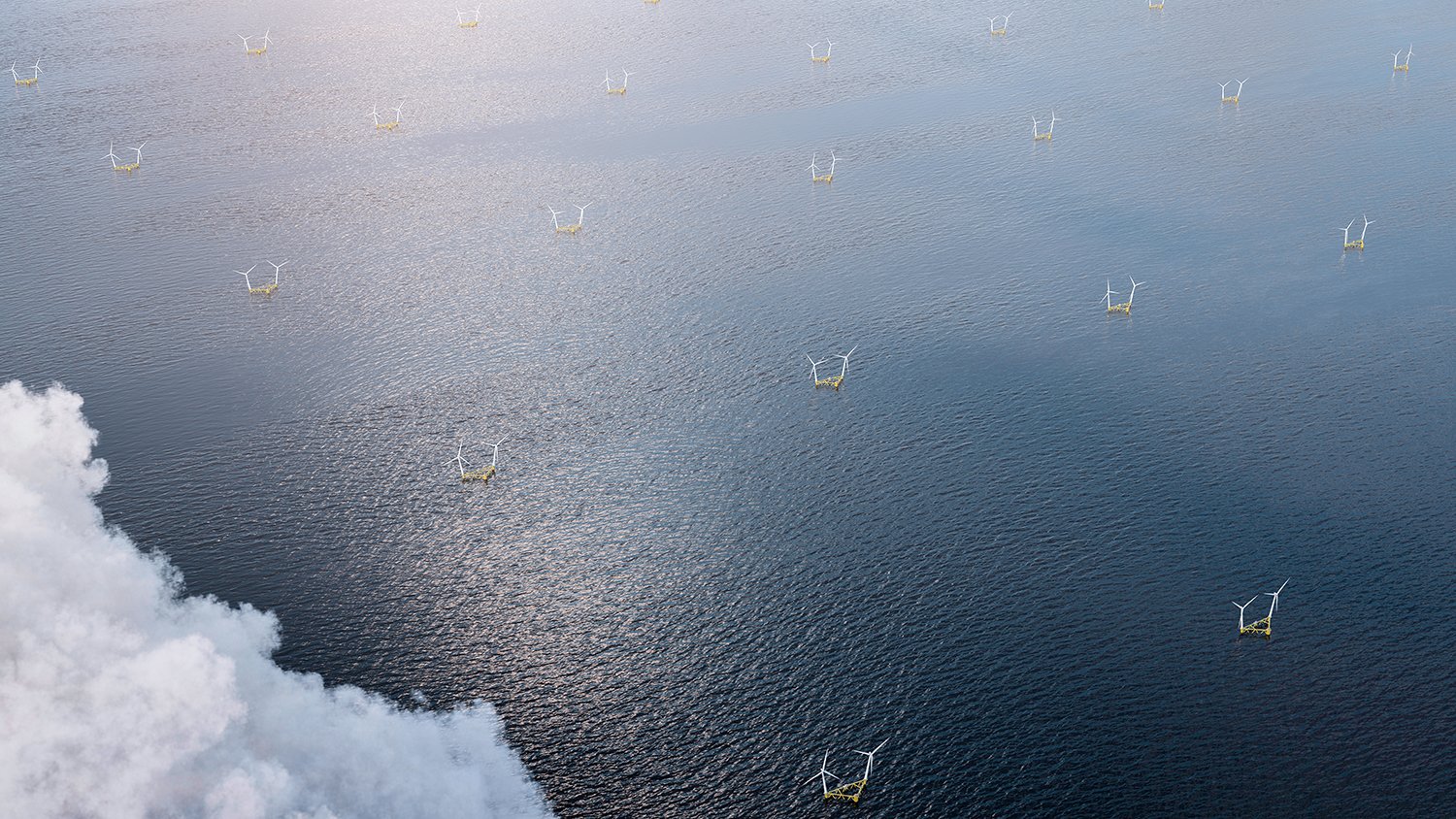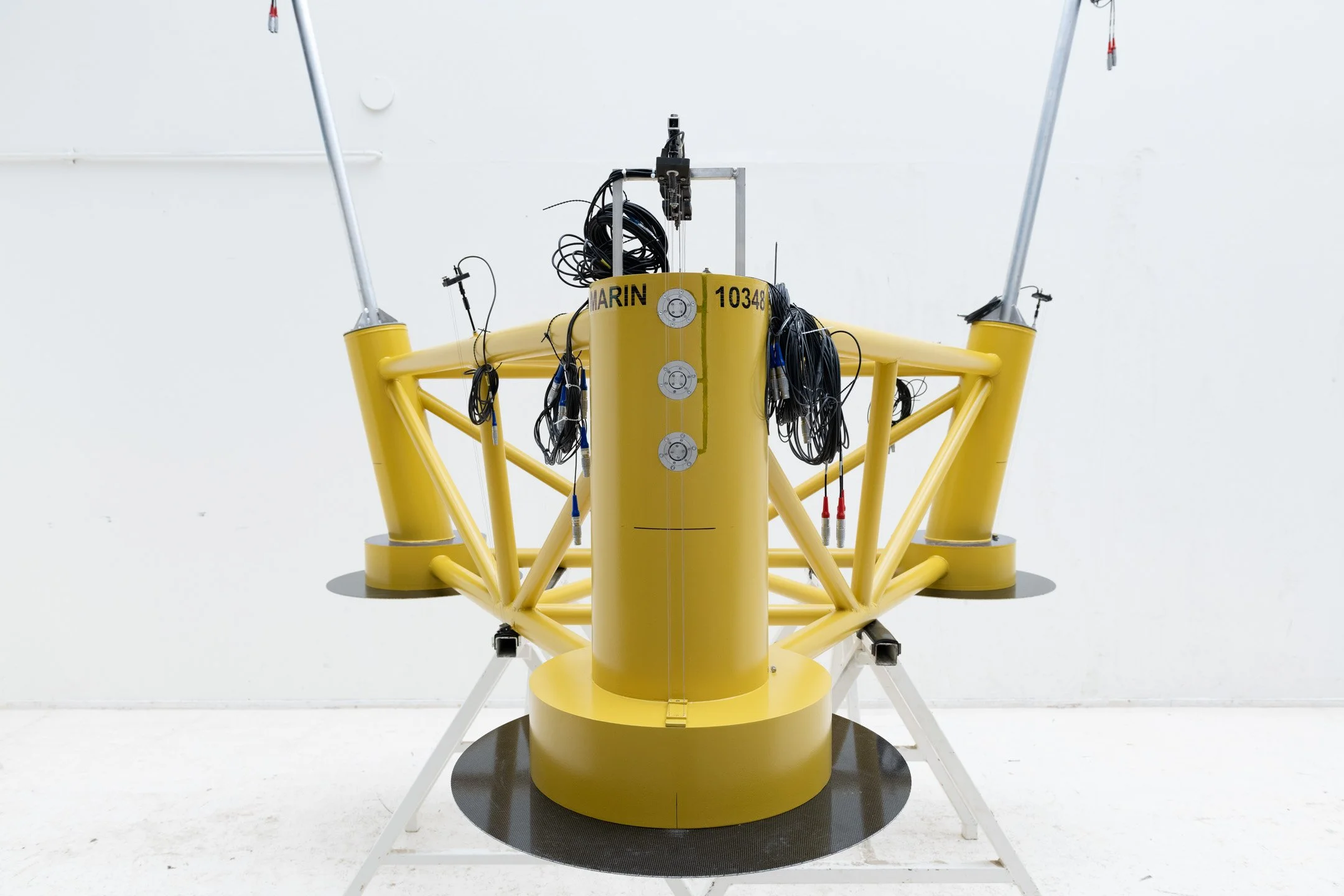
ABOUT US
THIS IS HEXICON
Hexicon is a global pioneer in floating offshore wind, focused on early project and technology development. We collaborate with local partners in key markets to create value through consulting, project divestitures, and licensing revenues from our patented TwinWind™ platform.
WHO WE ARE
Hexicon is a global project and technology developer in the offshore wind industry, originating from Swedish industrial entrepreneurship.
OUR MISSION
Hexicon’s mission is to accelerate the world’s energy transition by developing new markets and technologies for floating offshore wind power.
WHAT WE DO
Hexicon’s extensive project development experience and patented TwinWind™ technology, enables large-scale floating offshore wind projects with minimal environmental impact.
HOW WE WORK
In collaboration with partners and local stakeholders, Hexicon initiates and develops projects for floating offshore wind power in deep waters – beyond the horizon.
OUR TECHNOLOGY
We are developing our patented floating wind technology, TwinWind™. This platform features dual turbines, doubling energy production per sea area. It also makes wind power accessible in deeper waters with unlimited energy potential, where turbines are unnoticeable from land. TwinWind™ is a game-changer in the offshore wind industry with enormous international potential.
OUR PROJECT PORTFOLIO
Originating from Swedish industrial tradition, Hexicon is taking a first-mover position to develop floating wind in markets globally. We are proud to be one of the few floating wind companies with more than a decade of experience. Our active projects are in different stages and spread out worldwide – in areas where floating offshore wind is sometimes the only sustainable alternative.
-
Hexicon, through its joint venture, Freja Offshore, submits three applications to the Swedish Government to build three wind farms outside the coast of Sweden.
Glennmont Capital Partners approves 45 million euro in development capital to mature Hexicons project portfolio. From now and beyond, we are shaping our new history. -
TwinHub (formerly WaveHub) bids in the 4th CfD auction and wins a 15-year CfD (Contract for Difference) with the rate of GBP 87.3/MWh. Shortly thereafter Hexicon selects MingYang as the turbine supplier for the TwinHub project, which will be Hexicons first demonstrator project in the U.K.
AvenHexicon submits seven applications for seabed areas to the Italian government.
Two applications are approved and AvenHexicon is given precedence permits from the Italian Government to establish two offshore wind farms outside the coasts of Sicily and Sardinia. -
Hexicon makes an IPO on Nasdaq First North Premier Growth Market in Sweden.
Hexicon acquires WaveHub, a research project site for wave energy outside the coast of Cornwall. The acquisition prepares Hexicon for the 4th CfD auction in the UK.
Hexicon signs a joint venture agreement (AvenHexicon) with Avapa Energy Srl. in Italy to develop floating offshore wind outside the coast of Italy.
Hexicon signs a joint venture agreement with the South African developer Genesis Eco-Energy. -
Hexicon signs a joint venture agreement (Freja Offshore) with the Norwegian company Aker Offshore Wind, later Mainstream Renewable Power, to develop floating wind parks outside the coasts of Sweden.
Hexicon sells 90 % of its shares in the Pentland project, in North of Scotland, to CIP (Copenhagen Infrastructure Partners). -
Hexicon Korea signs a joint development agreement with Shell to develop the project Munmubaram outside the coast of South Korea.
The project is initiated and still ongoing with Shell. -
Hexicon signs an agreement with Coens in South Korea for a Joint Venture and applies for a seabed area for floating wind (CoensHexicon). CoensHexicon, later Hexicon Korea, is given a permit to build a 1.2 GW floating wind park outside the South Korean coast (Munmubaram).
-
Hexicon applies for and is given a permit from the U.K. government to put a 10 MW floating offshore wind park outside the coast of Scotland (Pentland). The Swedish banking group SEB is supporting the development process with capital funding.
The funding process runs into difficulties and leaves Hexicon with a lack of 10 % equity funding which then forces the company to a financial reconstruction. -
The Swedish offshore wind project is cancelled when the nuclear power phase-out is postponed.
-
The U.K. government starts to invest heavily in offshore wind which leads Hexicon to make a strategic decision to move into the British market searching for deep water areas.
Hexicon works intensively with the Swedish offshore wind project and initiates a plan B trying to find alternative demonstration sites. -
The Swedish government declares an investment in offshore wind power generation. This in turn leads to a collaboration with two major Swedish companies SSAB and E.ON. in which Hexicon will develop offshore wind power to contribute to their future electricity generation.
-
After several design attempts Hexicon presents the pioneering TwinWindTM design. The new floater design with dual turbines which allows for up to 40 % more turbines per water area compared to traditional one-turbine floaters.
-
Hexicon presents its first floater design – a large floating Island with solar and wind power generation.
-
Hexicon is founded by Percy Sundquist (former sea captain), Anders Tunbjer (Swedish shipbuilding manager) and Ocke Mannerfelt (successful industrial- and boat designer).
The trio is inspired by the world’s first floating wind power turbine demonstrated by Statoil, outside the coast of Norway the same year, still in operation.
OUR HISTORY
Since 2009, Hexicon has led the way in developing innovative floating offshore wind solutions. Our journey is defined by groundbreaking advancements, strategic partnerships, and global projects. From pioneering floating wind designs to securing key permits and joint ventures, we've consistently pushed the boundaries of offshore wind energy.
Explore our timeline to see how Hexicon has evolved from a visionary startup to a global leader in floating offshore wind, driving the transition to a renewable energy future.

